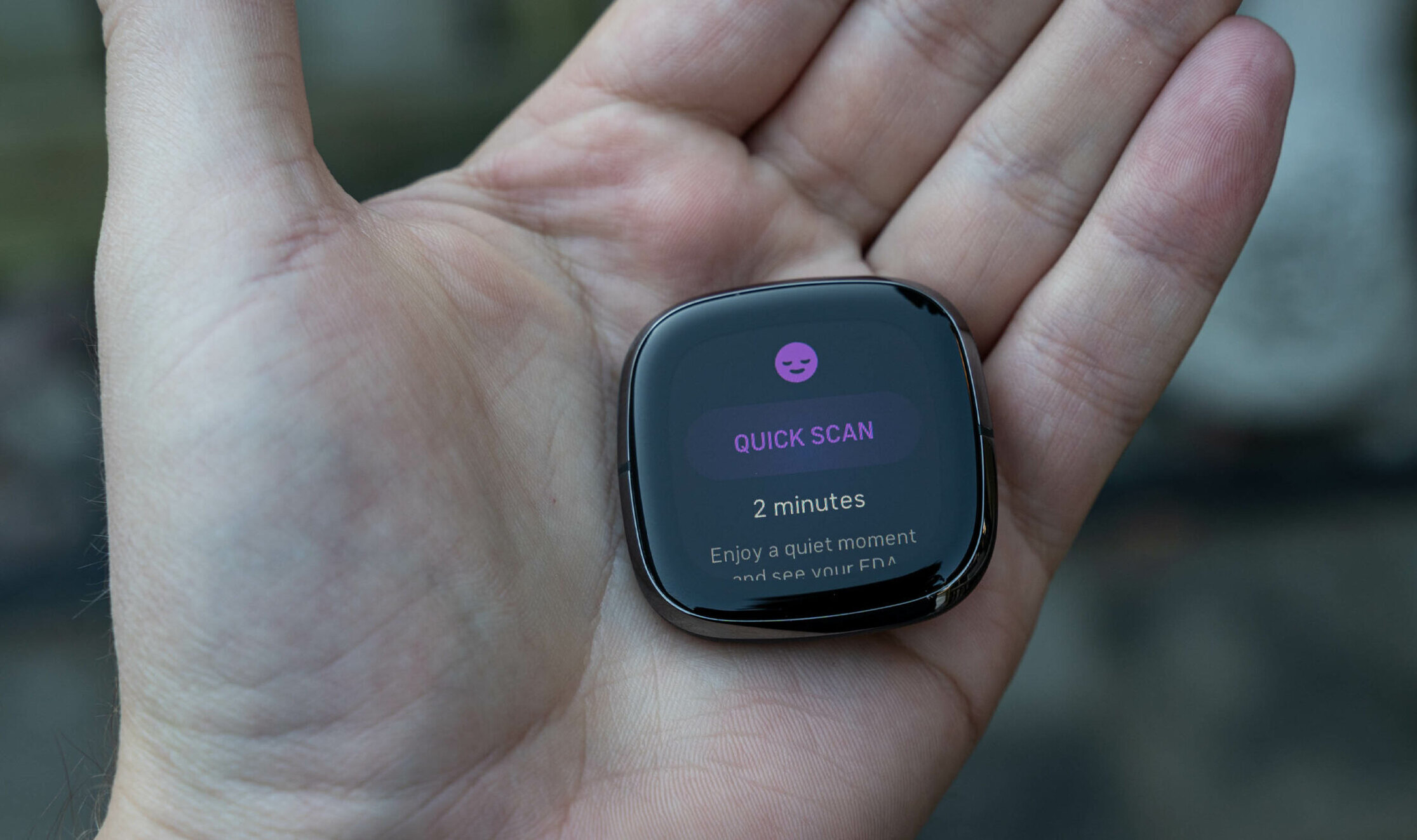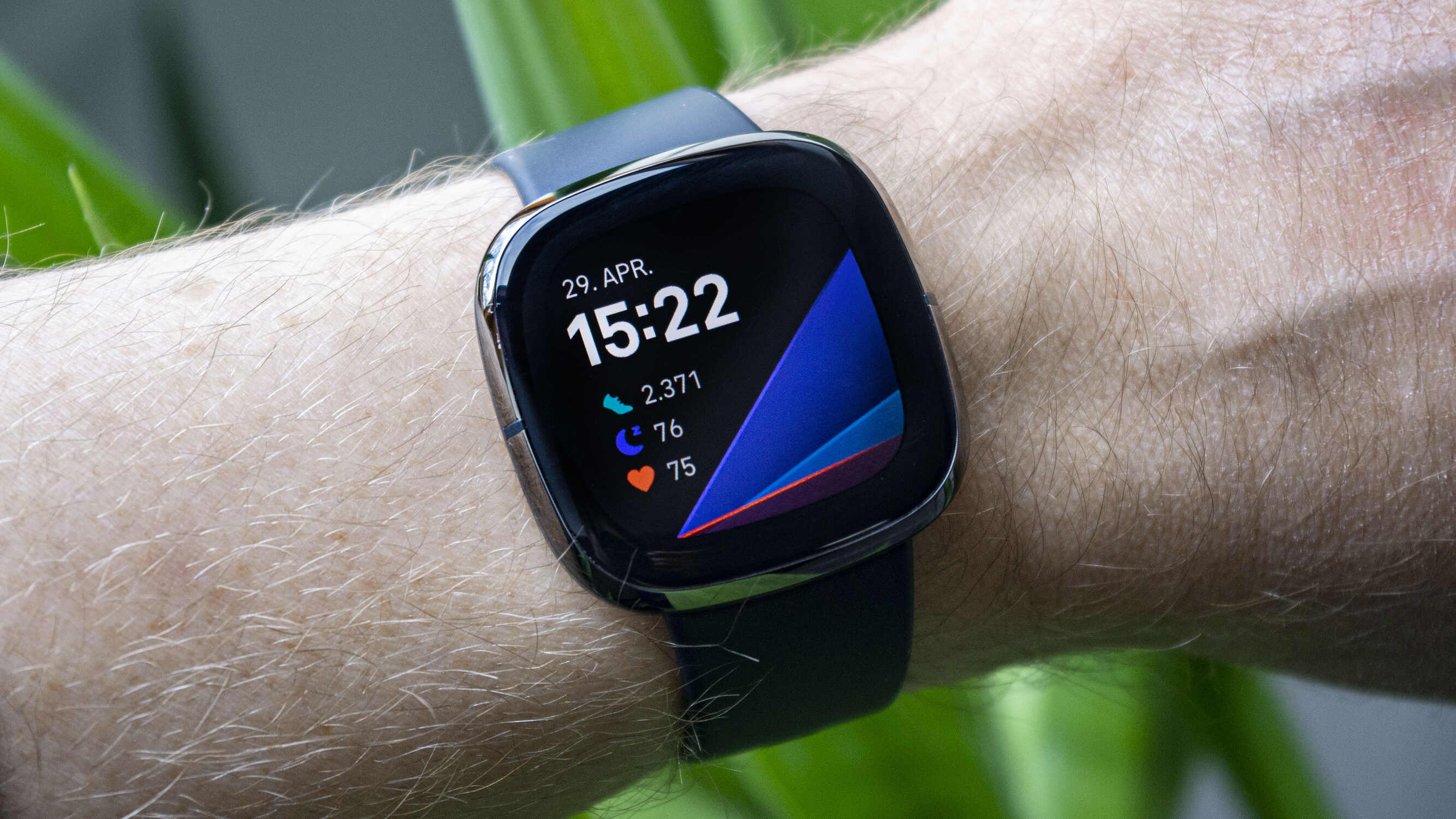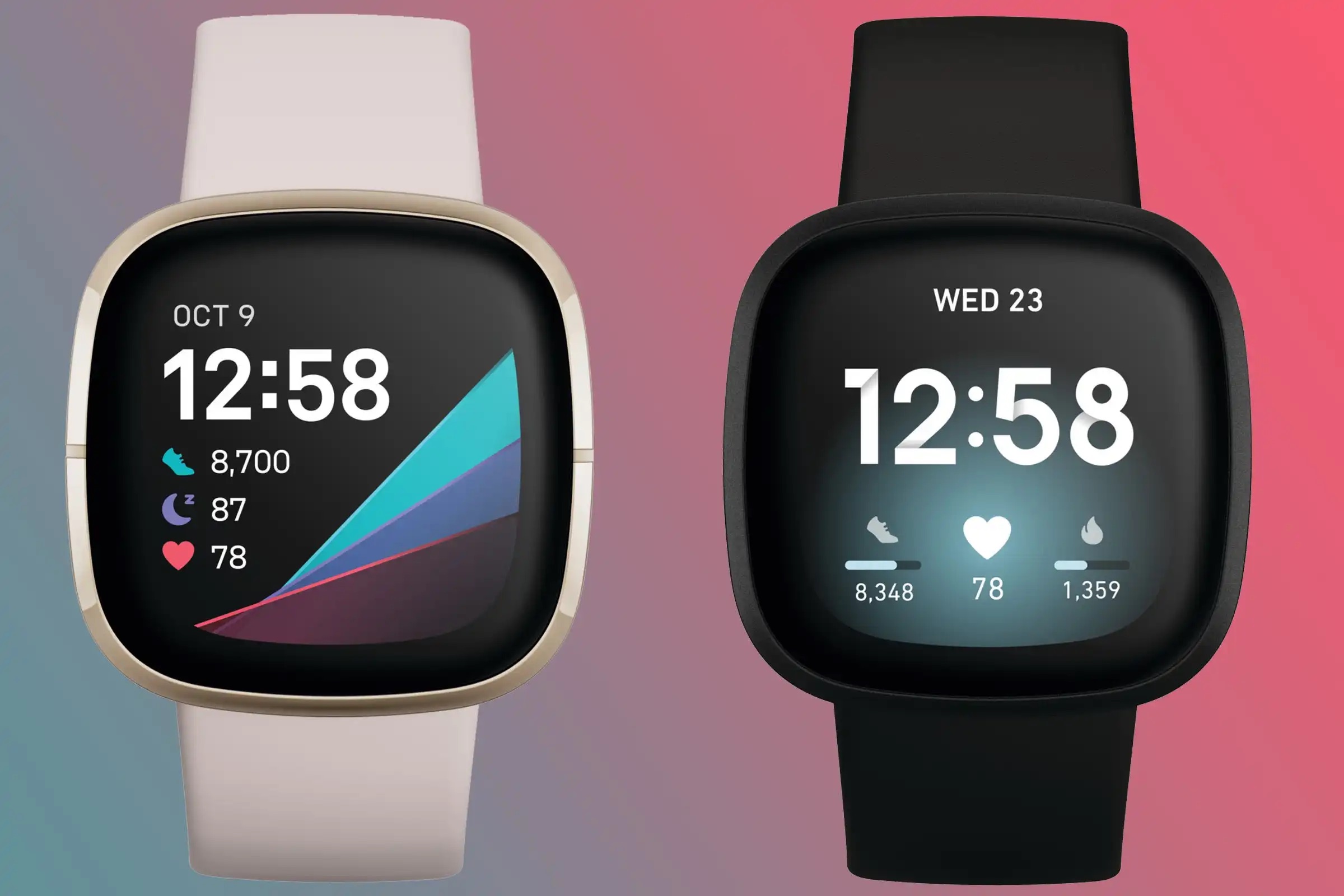Introduction
Wearable technology has revolutionized the way we monitor and understand our bodies, providing insights that were once inaccessible. Among the myriad of metrics that wearables can track, Electrodermal Activity (EDA) has emerged as a fascinating and valuable indicator of physiological responses. This article aims to delve into the intricate world of EDA responses as captured by Fitbit devices, shedding light on the significance of this data and its implications for personal well-being.
As individuals, we constantly experience a range of emotions and physical sensations, many of which are reflected in our skin's conductance. EDA, also known as galvanic skin response, measures the changes in electrical conductance of the skin, offering a window into our body's autonomic nervous system activity. This can be influenced by various factors, including emotional arousal, stress, and physical exertion, making it a rich source of information for understanding our overall well-being.
Fitbit, a leading name in wearable technology, has integrated EDA measurement into its devices, bringing this insightful metric to the forefront of personal health tracking. By leveraging advanced sensors, Fitbit devices can capture EDA responses, providing users with a deeper understanding of their body's reactions to different stimuli and situations.
Understanding EDA responses on Fitbit goes beyond mere data collection; it opens the door to a more holistic approach to health and well-being. By recognizing patterns in EDA responses, users can gain valuable insights into their stress levels, emotional triggers, and overall physiological reactivity. This knowledge empowers individuals to make informed decisions about their lifestyle, stress management, and overall health, ultimately leading to a more balanced and mindful existence.
In the following sections, we will explore the intricacies of EDA measurement, how Fitbit captures and interprets this data, and the practical implications of understanding EDA responses in the context of personal wellness. Let's embark on this enlightening journey into the realm of EDA responses on Fitbit, unraveling the mysteries of our body's subtle signals and their profound impact on our daily lives.
What is Electrodermal Activity (EDA)?
Electrodermal Activity (EDA), also referred to as galvanic skin response, is a physiological phenomenon that reflects the changes in electrical conductance of the skin. This conductance is influenced by the activity of the sweat glands, which are controlled by the sympathetic nervous system. EDA serves as a powerful indicator of the body's autonomic nervous system activity, offering valuable insights into emotional arousal, stress levels, and overall physiological reactivity.
The measurement of EDA has been widely utilized in various fields, including psychology, neuroscience, and human-computer interaction, due to its close association with emotional and cognitive processes. When an individual experiences heightened emotional arousal or stress, the sympathetic nervous system triggers an increase in sweat gland activity, leading to a rise in skin conductance. This physiological response is captured through EDA measurements, providing a tangible representation of the body's reactions to internal and external stimuli.
Fitbit has integrated EDA measurement into its wearable devices, enabling users to access this valuable physiological data in their daily lives. By monitoring EDA responses, individuals can gain a deeper understanding of their body's reactions to different situations, allowing for greater self-awareness and informed decision-making. The inclusion of EDA measurement in Fitbit's ecosystem represents a significant advancement in personal health tracking, as it empowers users to recognize patterns in their physiological responses and take proactive steps towards stress management and overall well-being.
In essence, EDA serves as a bridge between our internal experiences and the measurable changes in our skin's conductance. It offers a unique glimpse into the subtle yet impactful signals that our body emits in response to the complexities of daily life. By embracing EDA measurement, individuals can embark on a journey of self-discovery, gaining profound insights into their emotional and physiological states. This heightened awareness lays the foundation for a more balanced and mindful approach to personal wellness, ultimately enhancing the quality of everyday life.
As we continue to explore the intricacies of EDA responses on Fitbit, it becomes evident that this physiological metric holds the potential to revolutionize the way we perceive and manage our well-being. Through the lens of EDA, we unravel the intricate interplay between our emotions, stress levels, and physiological reactivity, paving the way for a more harmonious integration of personal health and technology.
How does Fitbit measure EDA?
Fitbit utilizes advanced sensors to measure Electrodermal Activity (EDA) with remarkable precision and reliability. The Fitbit device, equipped with a dedicated EDA sensor, makes direct contact with the user's skin, typically through the device's wristband. This sensor is designed to detect minuscule changes in the skin's electrical conductance, which are indicative of the body's autonomic nervous system activity.
The EDA sensor works by emitting imperceptible electrical signals into the user's skin and then measuring the skin's electrical conductance in response to these signals. These measurements are meticulously captured and processed to discern subtle variations in the skin's conductance, which correspond to changes in the user's emotional arousal, stress levels, or physiological reactivity.
Fitbit's cutting-edge algorithms and signal processing techniques enable the device to translate these intricate EDA measurements into meaningful data points, providing users with valuable insights into their body's responses. By leveraging this technology, Fitbit empowers individuals to gain a deeper understanding of their physiological reactions in real time, fostering a heightened sense of self-awareness and well-being.
The integration of EDA measurement into Fitbit's ecosystem represents a significant advancement in wearable technology, as it enables users to seamlessly access and interpret this valuable physiological data. By incorporating EDA measurement into its devices, Fitbit has elevated the standard of personal health tracking, fostering a more comprehensive approach to well-being that transcends traditional metrics.
In essence, Fitbit's method of measuring EDA embodies a harmonious fusion of cutting-edge sensor technology and user-centric design, culminating in a seamless and insightful experience for individuals seeking to understand and optimize their physiological responses. This innovative approach underscores Fitbit's commitment to empowering users with actionable insights derived from the subtle yet impactful signals emitted by their own bodies.
As we unravel the intricacies of how Fitbit measures EDA, it becomes clear that this technology holds immense potential to revolutionize the way individuals engage with their own well-being, paving the way for a more informed and proactive approach to personal health and mindfulness.
Understanding EDA Responses
Understanding Electrodermal Activity (EDA) responses is akin to deciphering the subtle language spoken by our own bodies. EDA serves as a silent yet profound narrator, offering insights into our emotional and physiological states through the lens of skin conductance. By comprehending the nuances of EDA responses, individuals can embark on a journey of self-discovery, gaining profound insights into their body's reactions to a myriad of stimuli and situations.
EDA responses manifest as fluctuations in skin conductance, reflecting the dynamic interplay between the sympathetic nervous system and our internal experiences. When we encounter emotionally arousing or stressful circumstances, our body's sweat gland activity increases, leading to heightened skin conductance. These fluctuations in EDA serve as tangible indicators of our physiological reactivity, offering a window into our body's responses to both internal and external stimuli.
On Fitbit devices, EDA responses are captured and presented in a user-friendly format, allowing individuals to observe and interpret these subtle physiological signals. By recognizing patterns in EDA responses, users can gain valuable insights into their stress levels, emotional triggers, and overall physiological reactivity. This knowledge empowers individuals to make informed decisions about their lifestyle, stress management, and overall health, ultimately leading to a more balanced and mindful existence.
The beauty of understanding EDA responses lies in its potential to foster self-awareness and proactive well-being. By acknowledging the intricate relationship between our emotional experiences and physiological reactivity, individuals can cultivate a deeper understanding of their own responses to various stimuli. This heightened awareness serves as a compass for navigating the complexities of daily life, empowering individuals to make conscious choices that align with their well-being.
In essence, understanding EDA responses on Fitbit transcends mere data interpretation; it represents a profound journey of self-discovery and empowerment. By embracing the insights gleaned from EDA responses, individuals can embark on a transformative path towards holistic well-being, leveraging the wisdom of their body's subtle signals to lead a more balanced and mindful existence.
As we delve into the realm of EDA responses on Fitbit, we unravel the intricate tapestry of our body's silent language, unveiling a world of self-discovery and empowerment that transcends the boundaries of traditional health tracking. Through the lens of EDA, individuals can embark on a profound journey of understanding and optimizing their well-being, harnessing the power of their own physiological responses to lead a more harmonious and mindful life.
Factors influencing EDA responses
The Electrodermal Activity (EDA) responses captured by Fitbit devices are influenced by a myriad of factors that intricately shape our physiological reactivity and emotional experiences. Understanding these influential factors is pivotal in unraveling the complexities of EDA responses and gaining profound insights into our body's subtle signals.
Emotional Arousal:
Emotional arousal plays a pivotal role in shaping EDA responses. When individuals experience heightened emotions such as excitement, anxiety, or anticipation, the sympathetic nervous system triggers an increase in sweat gland activity, leading to elevated skin conductance. These fluctuations in EDA serve as a tangible representation of emotional arousal, offering a window into the dynamic interplay between our emotional experiences and physiological reactivity.
Stress Levels:
Stress exerts a profound influence on EDA responses, reflecting the body's adaptive response to challenging situations. When individuals encounter stressors, whether physical, emotional, or cognitive, their sympathetic nervous system becomes activated, resulting in heightened skin conductance. By monitoring EDA responses, individuals can gain valuable insights into their stress levels, fostering a deeper understanding of their body's reactions to various stress-inducing stimuli.
Physical Exertion:
Physical exertion and activity can significantly impact EDA responses. As the body engages in physical exercise, the sympathetic nervous system responds to the increased metabolic demands, leading to changes in sweat gland activity and subsequent variations in skin conductance. Monitoring EDA responses during physical activities provides individuals with insights into their body's physiological reactivity to exercise and exertion.
Environmental Stimuli:
External environmental stimuli, such as temperature variations, humidity, and atmospheric pressure, can influence EDA responses. These factors can impact the body's sweat gland activity and, consequently, the skin's conductance. By considering the influence of environmental stimuli on EDA responses, individuals can gain a comprehensive understanding of the contextual factors shaping their physiological reactivity.
Cognitive Processes:
Cognitive processes, including attention, memory, and decision-making, can modulate EDA responses. When individuals engage in cognitive tasks that evoke mental effort or emotional engagement, their sympathetic nervous system activity may manifest in EDA fluctuations. Monitoring EDA responses during cognitive activities provides insights into the body's physiological responses to various cognitive processes.
By recognizing and acknowledging the multifaceted factors influencing EDA responses, individuals can gain a deeper understanding of their body's subtle signals and the intricate interplay between emotional experiences, stress levels, and physiological reactivity. This heightened awareness paves the way for informed decision-making and proactive well-being, empowering individuals to navigate the complexities of daily life with mindfulness and self-awareness.
Practical applications of EDA data on Fitbit
The integration of Electrodermal Activity (EDA) data into Fitbit devices opens a gateway to practical applications that extend far beyond traditional health tracking. By harnessing the valuable insights derived from EDA responses, individuals can embark on a transformative journey towards proactive well-being and mindfulness.
Stress Management:
EDA data on Fitbit serves as a powerful tool for stress management, enabling users to gain a deeper understanding of their physiological responses to stressors. By monitoring EDA fluctuations during various activities and situations, individuals can identify patterns of heightened stress reactivity. This awareness empowers users to proactively mitigate stress by recognizing triggers and implementing targeted stress-reduction strategies.
Emotional Well-being:
Understanding EDA responses provides individuals with a nuanced perspective on their emotional well-being. By observing EDA fluctuations in different contexts, users can gain insights into their emotional arousal and reactivity. This knowledge fosters emotional intelligence, allowing individuals to cultivate greater self-awareness and emotional resilience.
Mindfulness and Self-Awareness:
EDA data on Fitbit serves as a catalyst for mindfulness and self-awareness, offering users a tangible representation of their body's subtle signals. By integrating EDA measurement into mindfulness practices, individuals can develop a heightened sense of present-moment awareness and cultivate a deeper connection with their physiological responses.
Performance Optimization:
In the realm of sports and physical activities, EDA data can be leveraged to optimize performance. By monitoring EDA responses during training sessions and competitive events, athletes can gain insights into their physiological reactivity to different exercise intensities and environmental conditions. This information can inform personalized training regimens and aid in enhancing overall performance.
Personalized Health Insights:
The integration of EDA data into Fitbit devices contributes to the generation of personalized health insights. By correlating EDA responses with other health metrics, such as heart rate and sleep patterns, individuals can gain a comprehensive understanding of the impact of emotional and physiological reactivity on their overall health. This personalized data empowers users to make informed decisions regarding their lifestyle and well-being.
In essence, the practical applications of EDA data on Fitbit transcend traditional health tracking, offering a multifaceted approach to well-being that encompasses stress management, emotional well-being, mindfulness, performance optimization, and personalized health insights. By embracing the transformative potential of EDA responses, individuals can embark on a holistic journey towards proactive well-being and a more mindful existence.

























